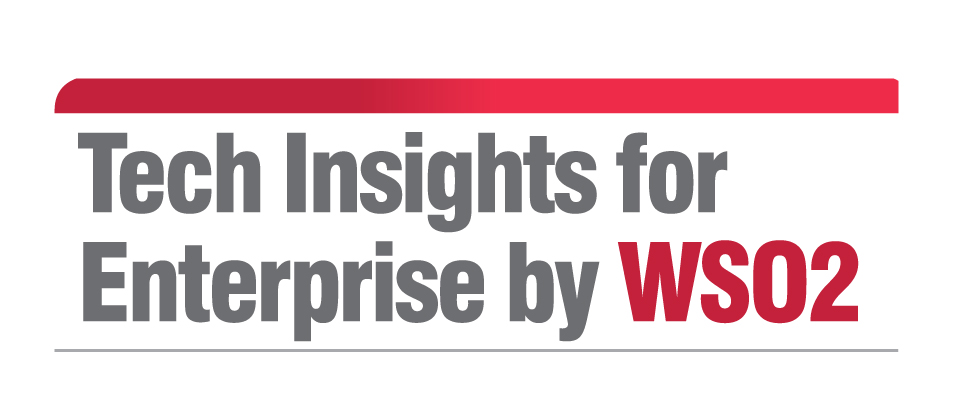Thursday May 01, 2025
Thursday May 01, 2025
Friday, 21 October 2016 00:01 - - {{hitsCtrl.values.hits}}
 By Eranga Perera
By Eranga Perera
Education institutions are starting to embrace technology to improve efficiency and speed. There are clear signs that information systems and technology are being used to share knowledge and enable students, educators and researchers to access information. But have these institutions, particularly in Sri Lanka, leveraged the full potential of technology?
Today, more powerful tools have been created and are available to solve real-world problems as part of a learning experience. Thus, there’s incredible opportunity to bridge private industries with students and academia to leverage potential benefits. Most lessons are effectively learnt via actions rather than learning through a textbook; therefore, creating learning experiences that are more project-based and that are more outcome-focused and engaging would bring peers and experts closer.
To maximise their investments, institutions first need a comprehensive digital strategy for enabling a connected education system where resources are managed and shared in a collaborative manner – connecting disparate information systems, devices and stakeholders. A successful system would ideally provide accurate information based on connected data in an efficient and transparent manner – in other words, create a seamlessly connected education platform.
There are key components that facilitate such a platform and an education institution needs to closely consider the different layers within a proposed enterprise architecture, such as integration of data, publishing, documenting and overseeing application programming interfaces (APIs) in a secure, scalable environment, and leveraging analytics to gain insights into the usability and efficiency of applications.
 Content, such as text books, research papers, and revision material, is often dispersed in disparate formats and may not be available in an organised way for quick and easy reference. Therefore, education organisations need to first digitise this content to be able to quickly and more efficiently organise and index content and make these available to users. Then the information should be exposed as an application via a web service, enabling reusability and allowing systems to connect easily with the respective institution.
Content, such as text books, research papers, and revision material, is often dispersed in disparate formats and may not be available in an organised way for quick and easy reference. Therefore, education organisations need to first digitise this content to be able to quickly and more efficiently organise and index content and make these available to users. Then the information should be exposed as an application via a web service, enabling reusability and allowing systems to connect easily with the respective institution.
Also critical is having a service-oriented architecture that connects a set of services, legacy applications and databases, and on top of that applications like web apps, mobile apps, and consumer-based applications. To this end, microservice architecture will enable a more agile approach in building solutions given the loosely coupled nature of services and its ability to enable significant changes without affecting other services.
Applications must be easy to use, have intuitive user interfaces
To connect various systems and still allow each of these to perform its tasks independently of others, the education institution needs to deploy an enterprise service bus (ESB). The right ESB will support a wide range of protocols, message formats, and message exchange patterns. This would essentially allow application and service developers to expedite their core tasks and focus on the education institution’s business requirements.
APIs too play a key role in sharing information as it enables businesses to expose content or services to internal and external audiences in a versatile manner. Today, most organisations use APIs to build their solutions internally and expose their services to the world at large. This is applicable to the education space as well by way of an education API gateway that’s required to provide managed and secure access to the APIs that have been exposed. For this, the API management capabilities of the architecture should include a cleanly separated set of components that can integrate seamlessly, and must be highly scalable with very low latencies.
The architecture of a connected education system should also be able to support message channels that allow people, systems, and devices to communicate asynchronously to enable uninterrupted communication with multiple users across various time zones. This means it must offer uninterrupted message delivery and be able to support message exchange patterns like publish/subscribe and message queues to ensure high performance and scalability.
Moreover, the architecture should support lightweight protocols, most notably message queuing telemetry transport (MQTT), which is widely used to connect applications running on the mobile devices and Internet of Things technologies used by students and educators.
Providing a security layer is also critical to implementing a connected education ecosystem because it allows the education institution to easily manage identities and access control of various users. Given the likely changes to user privileges and roles, the architecture must facilitate the connection of other services and applications to a centralised policy engine to validate user engagements. This will help the education institution to keep things simple in terms of authorisation policies and maintain consistency when making changes.
For users, the applications should be easy to use, have intuitive user interfaces, and be categorised in an orderly manner because educators as well as students won’t use applications that are complex and is too much of a hassle. Access to these applications should come with single sign-on, further enhancing user experience. Administrators of education institutions who handle the overall management of the institution too should be able to easily manage and govern application lifecycles, particularly when authorising, restricting, and controlling user access.
An education application gateway, an application program that runs on a firewall system between two networks, can be used to facilitate these needs. It essentially helps an education institution to share its information with other computers or devices in a secure way.
Finally, an education system can leverage analytics to gain meaningful insights into data that’s generated post implementation of the architecture. Gaining insights into data such as the most viewed content, the least popular ones possibly due to lack of depth or not being comprehensive enough, etc. would help the institution to identify patterns and trends on user experiences and be more proactive in streamlining and further improving their offerings. The ultimate goal is to meet the challenges of today’s higher education landscape with disruptive technology that will seamlessly integrate different systems and enable all stakeholders to reap the potential benefits.
(The writer is Senior Technical Lead – Solutions Architecture, WSO2. In his role, Eranga works with customers to identify enterprise architecture solutions mainly related to integration, security, and analytics. Prior to joining WSO2, he worked at Kingslake Engineering Systems as a Software Architect where he performed R&D work and was instrumental in introducing new tools and platforms to the organisation. He was responsible for carrying design activities and producing architectural documents. He holds a bachelor’s degree in Electrical Engineering from University of Moratuwa, Sri Lanka. For comments/feedback on this article email: [email protected]).
Discover Kapruka, the leading online shopping platform in Sri Lanka, where you can conveniently send Gifts and Flowers to your loved ones for any event including Valentine ’s Day. Explore a wide range of popular Shopping Categories on Kapruka, including Toys, Groceries, Electronics, Birthday Cakes, Fruits, Chocolates, Flower Bouquets, Clothing, Watches, Lingerie, Gift Sets and Jewellery. Also if you’re interested in selling with Kapruka, Partner Central by Kapruka is the best solution to start with. Moreover, through Kapruka Global Shop, you can also enjoy the convenience of purchasing products from renowned platforms like Amazon and eBay and have them delivered to Sri Lanka.
Discover Kapruka, the leading online shopping platform in Sri Lanka, where you can conveniently send Gifts and Flowers to your loved ones for any event including Valentine ’s Day. Explore a wide range of popular Shopping Categories on Kapruka, including Toys, Groceries, Electronics, Birthday Cakes, Fruits, Chocolates, Flower Bouquets, Clothing, Watches, Lingerie, Gift Sets and Jewellery. Also if you’re interested in selling with Kapruka, Partner Central by Kapruka is the best solution to start with. Moreover, through Kapruka Global Shop, you can also enjoy the convenience of purchasing products from renowned platforms like Amazon and eBay and have them delivered to Sri Lanka.